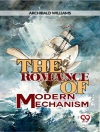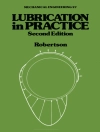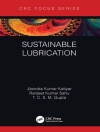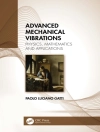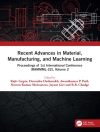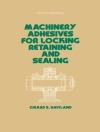This book highlights a multidisciplinary system for the future while protecting our environment. Certainly, the main objective of the proposed book has addressed several issues and bringing a good platform to understanding for future developments in metal oxide nanostructures for energy conversion, biomedical, and environmental management, however, which is support/carrier for antibacterial behaviors, pathogen infections, and bioinspired materials for energy savings and environmental impacts. Appropriately, I recommend the book to undergraduates, postgraduates, and doctoral students those who are working in materials science and researchers across the world working in interdisciplinary research.
İçerik tablosu
Part 1: Nanomaterials for Energy Conversion .- Chapter 1 – Zn O Chalcogenides Water Splitting (A.B. Isaev).- Chapter 2 – Copper NWs (Shehla Honey).- Chapter 3 – Bismuth Oxyhalides Nanocomposites (J. Madhavan).- Chapter 4 – Phosphate glass bioactive (S. Aravindan).- Chapter 5 – Mg O Nanoparticles (J. Sackey).- Chapter 6 – Perovskite Nanomaterials (Abdulgalim).- Chapter 7 – Mg Sn Alloys (Ayeshamariam).- Chapter 8 – Metal Additive Manufacturing (Beer Mohamed).-
Part 2: Biomedical and Environmental Applications.- Chapter 9 – Chitosan (K. Kanimozhi).- Chapter 10 – Tissue Engineering (Azhaguchamy Muthukumaran).- Chapter 11 – Drug Carriers (Muthaiyan Ahalliya Rathi).- Chapter 12 – Metallic Nanoparticles (Valanarasu).- Chapter 13 – Silver Nanoparticles (Kanimozhi).- Chapter 14 – Nanodiagnostics (Vijaya Chitra Arumugam).- Chapter 15 – NPS mushrrom fungal (Pothiraj).- Chapter 16 – Panchakavaya (Sathiyaraj).- Chapter 17 – Quercetin (Kanimozhi).- Chapter 18 – Metal oxide nanoparticles antibacterial (Ramesh).
Yazar hakkında
Kasinathan Kaviyarasu is a Material Scientist currently working as a Senior Researcher at University of South Africa (UNISA) under UNESCO Africa Chair in Nanosciences/Nanotechnology category. He completed master’s in physics at Loyola College, Chennai, and Ph.D. in Physics at Manonmaniam Sundaranar University, India, in 2014. He continued academic career as an Assistant Professor at Sri Sankara Arts & Science College affiliated with University of Madras, Tamil Nadu, India, before moving to South Africa in 2016. During his role as an Assistant Professor, he handled undergraduate physics subjects for undergraduate students conducting and hosting laboratory tours across nanoscience research facilities. He has served as a Student Coordinator to guide newly arrived newcomers (entry level) students to fit into the colleges and urban community.
Mohamed S. Elshikh is a Research Scientist at the department of Botany and Microbiology at King Saud University, Saudi Arabia. After his graduation, he has worked in the field of nanotechnology with the application of biological and environmental pollution. With research experience and knowledge, he has shared more than 120 commendable publications in peer-reviewed ISI listed International journals and domestic journals. He has presented researcher papers in the international symposia, and the proceedings were published by reputed publishers. His keen interest on nanomaterials and energy applications leads me to conceive a new project quite independently.
Dunia Abdul-Aziz Al Farraj is working as an Associate Professor in the Department of Botany and Microbiology, King Saud University, from 2007. She has graduated with the specialization of microbiology in the year 2002 and obtained Doctor of Philosophy in the year 2014 from King Saud University. During her role as the Assistant and Associate Professor, she has trained undergraduate and postgraduate students with the theme of nanomaterials preparations by both biological and chemical methods and its applications to energy, environmental pollution, and biomedical applications. During the research carrier, she has participated fifteen national and seven international conferences and workshops. In addition, Dunia Abdul-Aziz Al Farraj published more than fifty research and review articles in ISI journals and actively participated potential reviewer for the international journals. In addition, she has translated scientific books into Arabic language which is very useful for the students in Arabic language-speaking countries.


